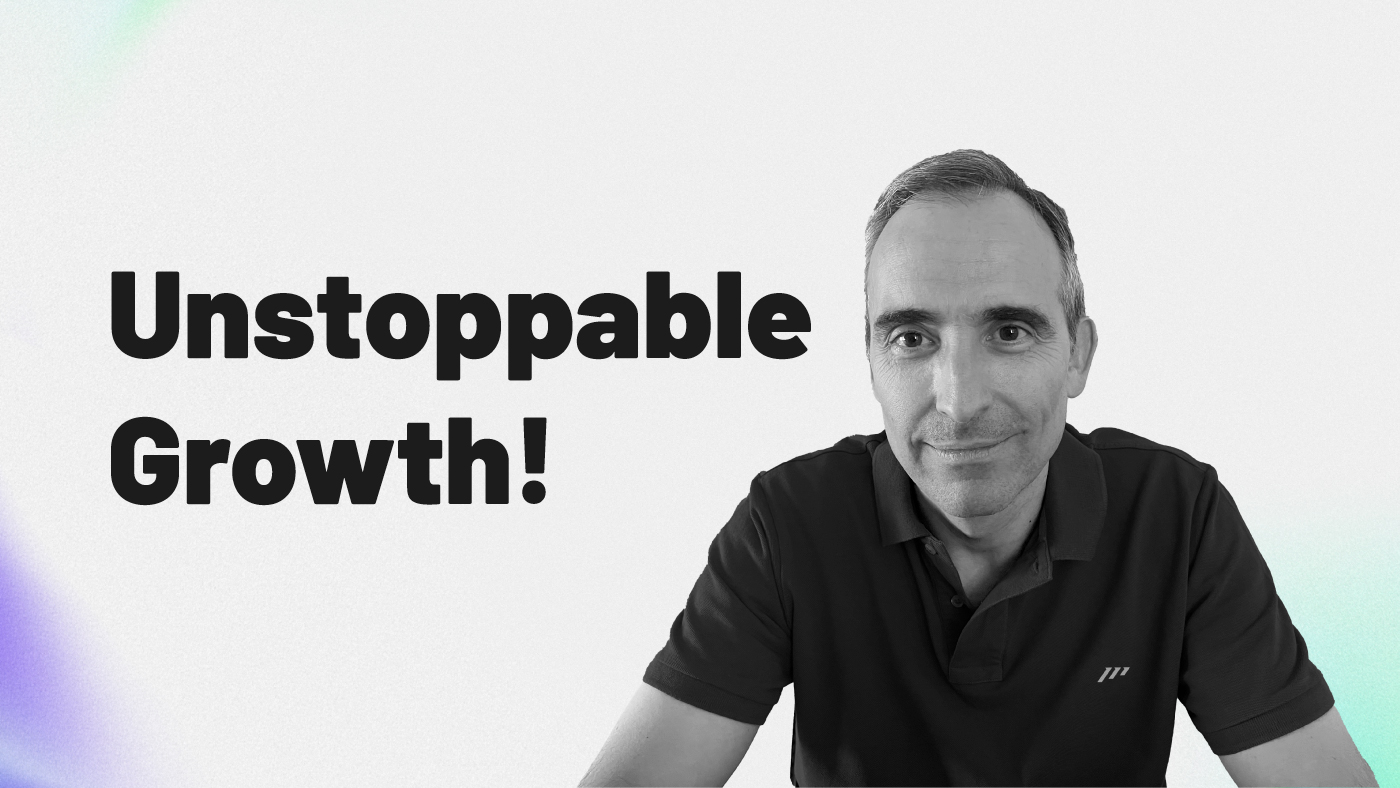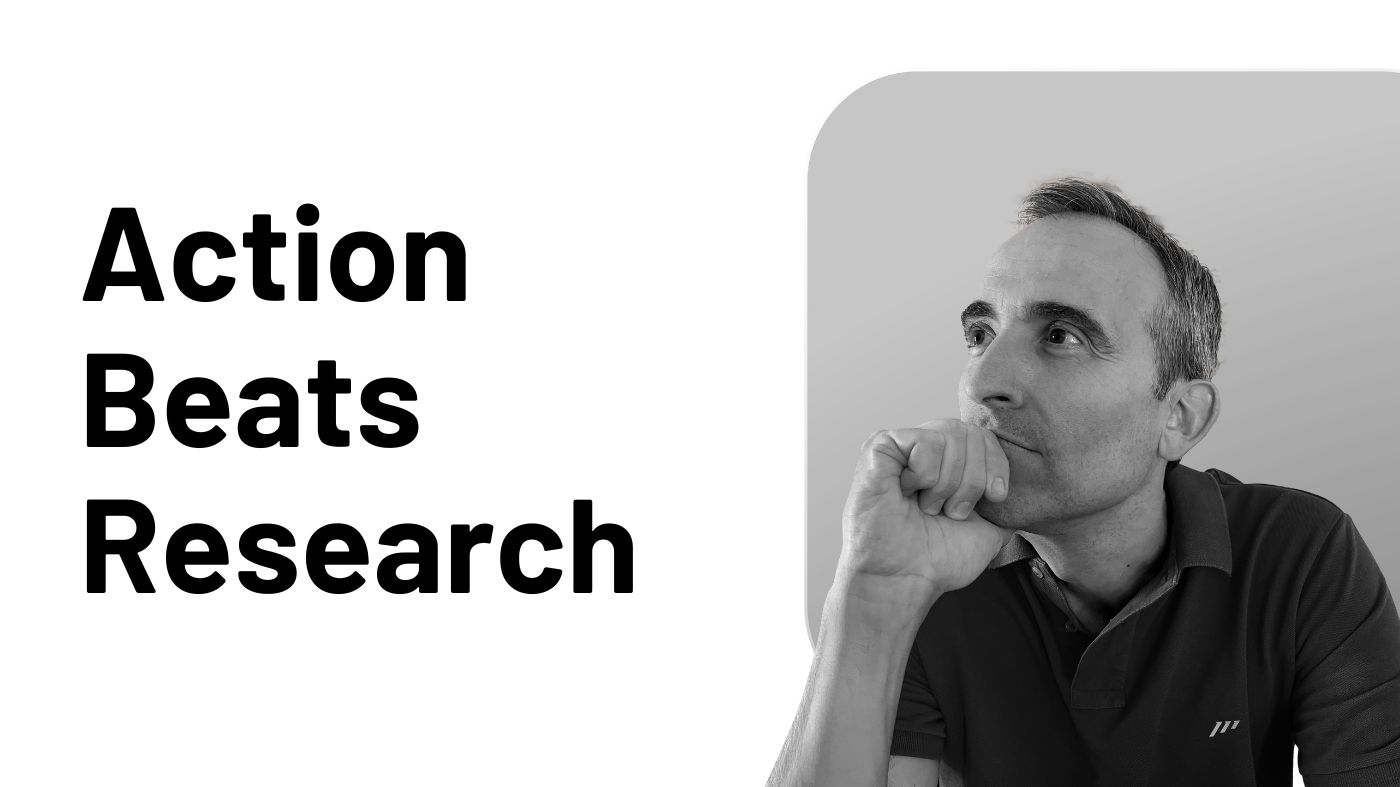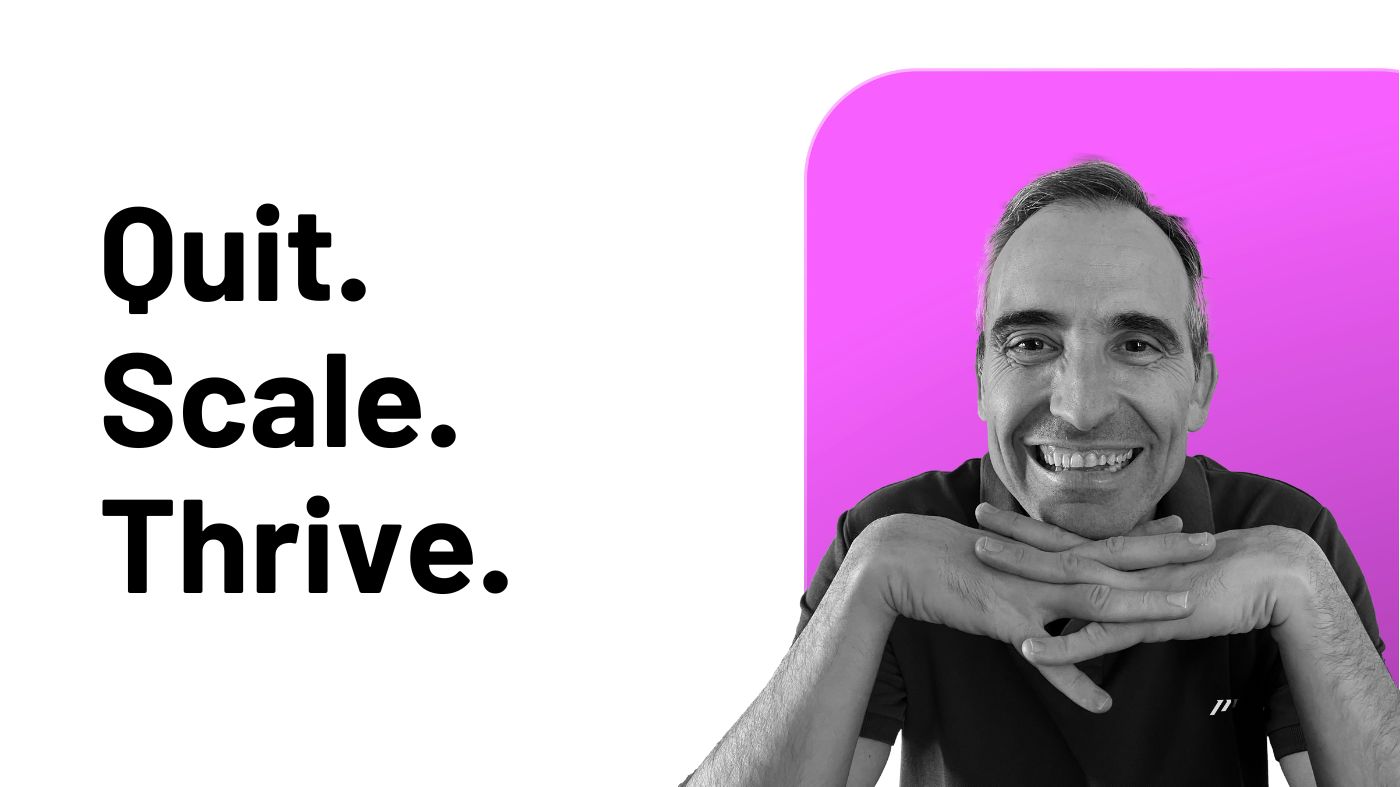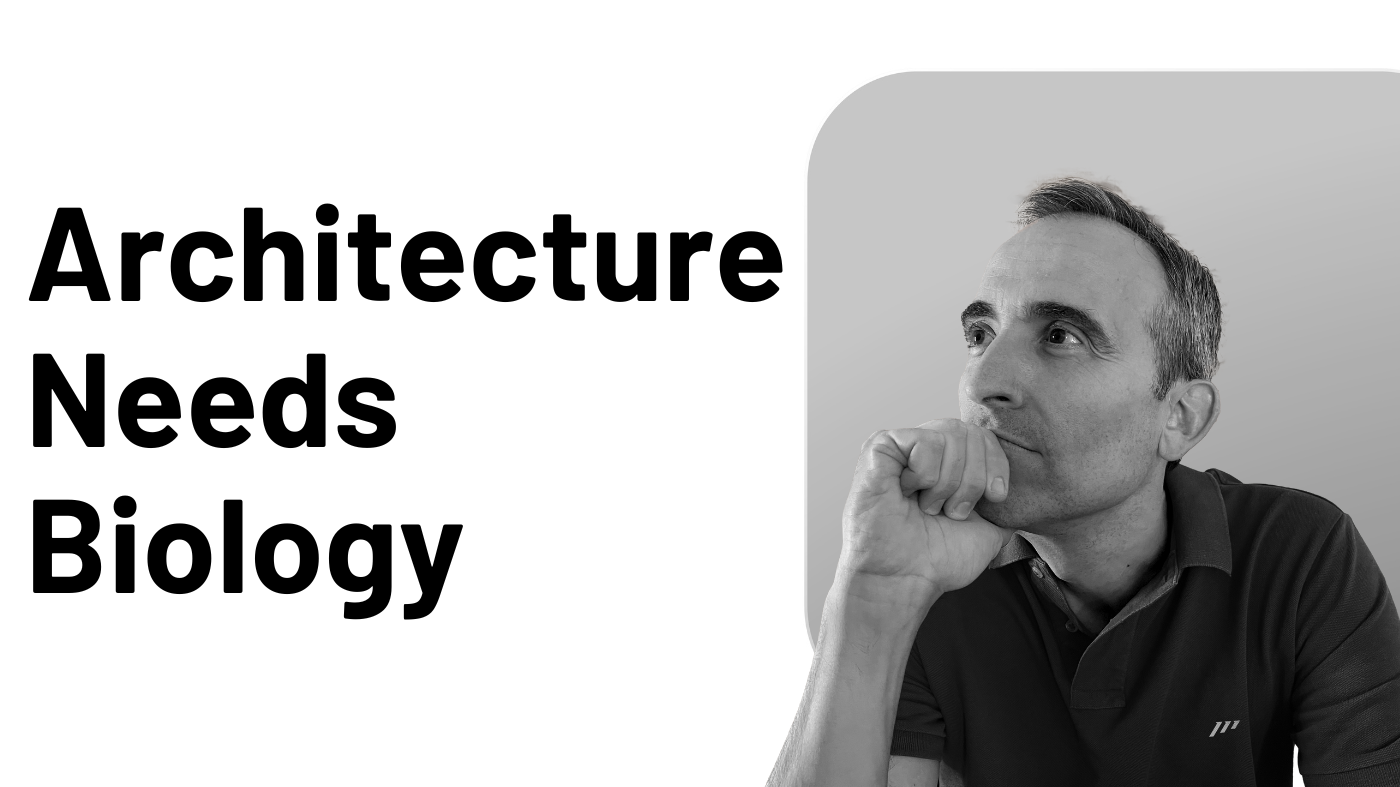This article is a journey of discovery, a chance to engage in thoughtful reflection, which is especially meaningful nowadays, inspired by a year drawing to a close.
My aim is to motivate you on your own journey in the realms of note-taking and Personal Knowledge Management (PKM), using my own experiences as a guide.
I’ll link to multiple articles I’ve written before, where I shared my feelings, experiences, and insights at those times.
Writing things down is a beautiful and fundamental step in note-taking and PKM.
It not only helps you think and analyze in the moment but also allows you to look back later and see how you’ve grown and changed.
This journey has been incredibly fulfilling for me, and I hope it will be just as enriching and valuable for you, a busy professional like myself.
So, let’s get started and explore together!
A Little Bit of Context
How you approach the world of note-taking and PKM depends on who you are, how you brain works, and what you do for a living.
That’s why I want to start by sharing a bit about my background, so you get a clear picture of who I am.
I’m originally from Spain and my journey with technology began early.
At just 8 years old, back in 1984, I was captivated by my MSX computer the moment I started using it.
It all kicked off when my parents gifted me a book called “How to learn Basic”. That’s where my story in coding began.
I was immersed in coding right up until I was 26.
During those years, I graduated in Computer Science, worked with big consultancy firms like PriceWaterhouse Coopers and Accenture (and 3 more big corps), and learned multiple programming languages.
My coding journey started with Basic, but the real turning point was in 1992. I was 16 then and began creating applications with Dbase, earning my first paycheck as a developer.
This experience played a pivotal role in my future endeavors, as you’ll see later on.
Fast forward to today, I’ve taken a different path.
At 26 (almost 22 years ago), I stepped away from coding and developing software to start my first venture, a marketing agency.
Now, I’m at the helm of four different companies, leading a fantastic team of over 60 people.
Now that you know who I am, where I come from, and what my current situation is, let’s dive into what really brought you here: My journey with note-taking and PKM.
Evernote: The Starting Point of Everything
Evernote marked the beginning of my journey to a completely 100% paperless lifestyle, especially after the launch of the iPad2 on March 11, 2011.
Before this shift, I was almost paperless, using a single notebook throughout the year for random thoughts and meeting notes.
However, my allergy to dust made using paper a hassle.
The transition to Evernote was a game-changer, allowing me to discard my notebook and embrace a newfound sense of freedom and ease.
It wasn’t just about being paperless; it was about having constant access to my notes and knowledge, giving me a sense of control and peace of mind. I could quickly locate any information, which felt empowering.
For nearly ten years, I was an avid Evernote user, even participating as a beta tester and engaging closely with their team.
But I began to feel limitations in how Evernote supported my thought processes.
I realized that my thinking differed based on the context. Taking notes in a meeting wasn’t the same as crafting a yearly strategy for my companies.
This was the seed of two ideas that have since become crystal clear and pretty well-defined thanks to ICOR®, the methodology that Tom Solid and I created for our joint venture: “The Paperless Movement”.
These two initial ideas are what we now know as “Shallow Thinking” and “Deep Thinking”.
Shallow Thinking is about quickly capturing, organizing, and retrieving information. It’s the first layer of thinking, where information is processed in a snap.
Deep Thinking, on the other hand, involves a more profound level of processing: understanding concepts, combining ideas, and seeking deeper meanings.
Visualization is key in Deep Thinking, and I found mind mapping tools like Mindnode incredibly useful for this, as I’ll explain later.
However, I encountered a challenge with Evernote: it didn’t facilitate the seamless initial connection of ideas necessary for my Shallow Thinking.
Like everyone, my brain works quickly, and I needed a tool that could keep pace with my thoughts to ensure everything runs smoothly.
That’s when I discovered Roam Research, a pivotal moment in my note-taking and PKM journey.
Roam Research: The Change of Model
On September 21, 2020, I wrote an article titled “How to Create Your Second Brain, and Why Roam Research Is Pushing to It”.
Reflecting on this piece now, I’m struck by how much my understanding of note-taking, PKM, and productivity systems has deepened.
This growth is the result of countless hours spent testing, exploring, experimenting, struggling, suffering but also enjoying all kinds of concepts, workflows, and tools.
I can clearly see, for example, the evolution in my conception of the “Second Brain”.
In a more recent article, which you can find here (“We Don’t Need a Second Brain. One Is Enough!“), I discuss our updated approach to this concept at the Paperless Movement®, tailored to the needs of busy professionals.
The year 2020 was a landmark for Roam Research, highlighted by its impressive $9 million funding and a valuation of $200 million. But more importantly, it was a year that transformed the landscape of note-taking and PKM globally, deeply impacting lives all over the planet in profound ways.
For me, Roam Research was a cornerstone, introducing me to the concepts of outlining and back-linking.
This shift improved how things worked for me, making processes smoother and more efficient.
I transitioned from a structured hierarchy of folders and notes to a more fluid and seemingly chaotic system of graphs and points.
It was a significant change, especially coming from a user-friendly interface like Evernote to the blank slate of Roam Research’s daily notes.
What am I supposed to do? That was my thought at that time staring at that minimal daily note page.
Initially, I struggled with this transition and realized I had made a big mistake: I had overlooked other noteworthy alternatives to Evernote, such as Remnote, Obsidian, and Notion.
This oversight limited my productivity and affected my work and personal life. Since that realization, I’ve been fully immersed in the world of note-taking and PKM, a journey that has continued for over three years and one I plan to pursue with even greater intensity until I die, due to the deep impact it has represented in my life at all levels: personal and professional.
Looking back at that initial article about Roam, I can see the seeds of what would become a key concept in ICOR®: distinguishing between two worlds, “Information“ and “Action“.
The changes in my life since then have been nothing short of transformative.
Notion: A Pivotal Moment
As I said before, I’ve been deeply involved in the world of note-taking and PKM for the last years.
Around the same time I discovered Roam Research, I also discovered another powerful one: Notion.
My introduction to Notion was particularly impactful, thanks to August Bradley and his PPV (Pillars, Pipelines, Vaults) framework.
This approach resonated with me, as it closely resembled the system I’d developed over the years, initially inspired by David Allen’s GTD methodology.
I was an early adopter of Allen’s ideas, having read his book back in 2001. His concepts helped refine the self-created methodology I’d been intuitively using.
Notion struck a chord with me. It reminded me of my early days using Dbase, as Notion allowed for the creation of relational databases without any coding.
I even wrote an article titled “Why I Do Think Notion Software Can Change Your Life” to share my thoughts.
Inspired by August’s insights on Notion, I developed my own comprehensive productivity system. It went beyond mere note-taking and PKM, blending information and action in a cohesive way.
However, I soon realized the limitations of a “one app fits all” approach.
Despite Notion’s strengths, I encountered challenges with its note-taking and knowledge management capabilities.
My thought process aligns more with outlining, which isn’t Notion’s strong suit.
Additionally, Roam Research’s GUI/UX didn’t appeal to me. I appreciate minimalist designs, but Roam Research felt too extreme.
Aesthetics in GUI/UX are crucial for me; they inspire and motivate me to maximize both the tool’s potential and my own. This feeling is perfectly echoed in an article by the founder of Craft, Balint Orosz, “Why did I build Craft?”.
My journey led me to Workflowy, a tool I’ve been using for years. It became part of my triple-stack approach for note-taking and PKM:
-
Notion: I transitioned from Evernote to Craft, drawn by its features and beautiful GUI/UX, but eventually settled on Notion for its note-taking and storage capabilities using databases.
-
Workflowy: This became my go-to for “Shallow Thinking”, helping me structure my thoughts with its outlining prowess.
-
Mindnode: For “Deep Thinking”, I leveraged this visual tool to its fullest, benefiting from its ability to visually map out ideas.
Obsidian: The Perfect Tool?
In May 2021, Obsidian entered my life, bringing new clarity and organization to my note-taking and PKM system.
In an article I wrote on October 23rd, 2021, “Why Your Action System Cannot Be Your Thinking System as a Knowledge Worker?“, I delve into the necessity of separating information from action, as they inhabit distinct realms with their own unique concepts, workflows, and tools.
Obsidian has been a game changer for me, providing the freedom I’d been seeking for so long.
I even wrote an article on November 16th, 2021, titled “10 Reasons Why I Still Use Obsidian Being a PKM Geek”, where I passionately advocate for Obsidian.
However, I must admit I made a mistake in my enthusiasm for Obsidian.
I tried to make it (again) a one-size-fits-all solution, combining information and action in one app. This was my second and final failure in such an attempt, a lesson I’ve truly learned this time.
But my journey with Obsidian wasn’t without its challenges.
-
I missed having a robust outliner, as the plugin I used couldn’t match my experience with Workflowy.
-
While I greatly respect Stephan Ango (Obsidian’s CEO) and the Obsidian team, I found myself at odds with their approach of using local files, vaults, and plugins. The more I used them, the more I questioned this method.
-
I also realized I was spending too much time setting up my system, when the real focus should be on doing and creating.
During this period, I started paying attention to a trend that many were overlooking: Artificial Intelligence (AI).
A few years ago, everyone was obsessed with blockchain and cryptocurrencies, with hardly any mention of AI.
However, since I started using Obsidian, another app caught my attention: Mem.
In an article from March 22, 2022, “4 Apps that Bring AI Closer to Your PKM to Improve You as a Knowledge Worker“, I publicly expressed my interest in AI for the first time and mentioned Mem.
When I first came across Mem, it was quite basic, and so I initially chose Obsidian while keeping an eye on Mem’s development.
Mem: The Power of AI
On March 31st, 2022, I shared my experience in an article about how I fully embraced Mem as my core app in my PKM system.
The piece, titled “How and Why I’ve Dramatically Improved My PKM by Switching to Mem After 1 Year using Obsidian”, reflects on my transition from using Obsidian to Mem and how it benefited my workflow.
I spent an entire year considering this switch, as I believe changing core tools should be a thoughtful process.
The journey with Mem was extraordinary, especially because thanks to this app, Tom Solid and I had the opportunity to meet and collaborate, a partnership that ultimately led us to partner up and literally take “The Paperless Movement” to the next level.
However, things didn’t go as anticipated with Mem.
By October 2023, I found myself needing to quit.
I explained this decision in another article, “Why We’ve Stopped Using Mem as Our PKM’s Shallow Thinking Tool at the Paperless Movement®”.
So, now what?
Heptabase: The Perfect Fit
Like I’ve mentioned before, my approach to manage information and knowledge has always been consistent.
Here’s a simple breakdown of my process:
-
Jotting down thoughts or capturing information.
-
Quickly structuring them using outlining (Shallow Thinking).
-
Switching to a visual tool for deeper analysis (Deep Thinking) when outlining gets too cluttered.
Throughout my journey, as you might have seen, I’ve used multiple apps for this workflow.
Initially, Roam helped with outlining, and later, I switched to Workflowy.
For the visual aspect, which is crucial to me as a fan of mind mapping, I began with Mindnode.
Eventually, I moved to XMind. Its ability to include more text in a node bridged the gap between textual outlining and visual representation for me (something I’ve always been claiming to visual thinking tools).
One of this visual tools were my friends at Scrintal, a tool I’ve been testing since its early stages, sharing thoughts with their amazing crew.
I really loved Scrintal because I believe it offers the right blend for Deep Thinking, combining text-based PKM tools with visual elements.
Here’s an article that sums it up well: “Why Scrintal App is Beyond Mind Mapping in Your PKM”.
The key aspect Scrintal initially overlooked was their GUI/UX, which at that time wasn’t up to par. However, it’s impressive to see the transformation they’ve achieved now, and they certainly deserve congratulations for their remarkable improvements.
But, last summer, Heptabase entered my life, filling all the missing pieces related to Deep Thinking and the perfect text-visual combination.
This article explains it all: “Why We Use Heptabase at the Paperless Movement® as our PKM Core App”.
But, what about the “Shallow Thinking” part of the thinking process?
For that, Tana has been the perfect solution, running in parallel with the other tools.
Tana: A Step Beyond
On October 24, 2022, I shared my initial thoughts on Tana, an app aiming to transform how we approach productivity, in my article titled “My First Impressions about Tana, the App that Pretends to Revolutionize the Productivity World”.
I was immediately drawn to its stunning, gorgeous, and intuitive GUI/UX.
Tana stands out as a rapid note-taking app. It allows you to quickly jot down ideas as they occur and easily organize them, even on mobile devices.
This feature is particularly useful for capturing thoughts on the go, effectively harnessing the momentum of your ideas and reflecting the natural structure of your thoughts as they form in your brain (that’s what outlining allows: add context to your captured information).
What makes Tana unique is its concept of treating each piece of information as a “node”, the smallest piece of information, which can be seamlessly and instantly (and I mean it) integrated into the right place through “supertags”.
Tana’s supertags are databases but offer more features, including the ability to assign a node to multiple supertags instantly. This feature mirrors the speed of our thought processes, ensuring no idea is lost.
Supertags are a key element in Tana, offering functionalities that feel like magic, especially to those familiar with object-oriented programming (as I am, after coding in C++ a long time ago).
They are a dream come true, combining fast data capture, intuitive organization, and easy retrieval.
For me, Tana has become an essential tool.
Its AI features are evolving impressively, enhancing my knowledge in ways I hadn’t anticipated.
It’s reached a point where, as a busy professional, this tool addresses a significant portion of my PKM requirements. Honestly, about 80-90% of my thought process relies on Shallow Thinking.
I don’t belong to academia. I’m not a researcher who needs to go to the deepest aspects of a topic or certain area. I don’t need to delve into the most intricate details of a subject.
What I really need is speed, organization, and clarity to efficiently capture, process, and access information as and when it’s necessary.
Thanks to Tana, I have achieved all I wished for: fast capture, quick structuring, intuitive organization, rapid and easy retrieval, serendipity, and the emergence of objects where I need them.
However, when the need arises for deeper, more visual processing, I switch to Heptabase.
This switch usually happens in two scenarios:
-
When outlining in Tana gets too complex.
-
When I need to write in a long-text format.
Tana equals quickly linked ideas while Heptabase is the way to better express them by going deeper.
I find using Tana and Heptabase together works well, as they complement each other and excel in their respective areas: Tana for capturing and initially structuring information, and Heptabase for long-form text and visual data.
I always advise software companies to focus on their core strengths and unique features, forgetting about the rest. That’s how users (and software companies) get the best results.
For me, Tana should always be focused on quick data capture and representing ideas through linking nodes. I don’t see Tana evolving into a platform for long-text or visual data, as that would deviate from its core features, a topic I’ll go deeper in future articles.
For now, I believe this overview sufficiently captures my experience with Tana.
Conclusions
Marshall McLuhan once said, “We shape our tools, and thereafter our tools shape us”.
This quote deeply resonates with me and represents the philosophy of the “one brain with two parts” approach that we share at the Paperless Movement®.
The core idea here is to view ourselves as a unified and only system, blending concepts, workflows, and tools into a seamless, self-reinforcing positive loop.
This integration removes friction and pain points, allowing us to use technology intuitively because the moment the physical and digital parts of our brains merge into that single system, they’re truly in perfect sync.
Crafting and implementing a productivity system is a journey, one that I’ve personally navigated, as you seen in this article, in the realm of information management. The journey in the world of action mirrors this complexity but brings its own unique, enriching experiences, complete with distinct concepts, workflows, and tools.
These explorations are more than just about efficiency; they’re about self-discovery.
They compel us to reflect on our thought processes, our perception of the world, and how we harness tools to create tangible, interactive systems that foster our daily growth.
In this synergy, we not only enhance our tools, but they also enhance us, culminating in a harmonious collaboration that improves both our work and life.
At the Paperless Movement®, we’ve developed the ICOR® Journey designed to help you build your end-to-end productivity system efficiently, with minimal effort, resulting in the optimal set of tools for consistent, peak performance.
This brief article encapsulates over a decade of intense focus, particularly in the last three years.
And I must say, I’ve thoroughly enjoyed this journey!




